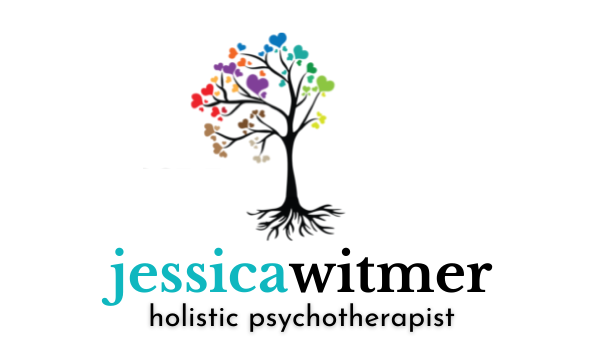In Person and Virtual EMDR Therapy (Indiana)
Jessica has long been interested in helping people find healing from mental, emotional, and spiritual problems. After working in ministry and receiving an MA in pastoral ministry from Bethel University, Jessica began to research other ways to help people find healing from emotional and spiritual wounds. This led her to the Cleveland Clinic where she was trained in Heart-Centered Hypnotherapy and received her certification as a hypnotheripist. From there, Jessica continued her studies by graduating with an MS.Ed from Purdue University. Today, Jessica is a mental health counselor who specializes in EMDR therapy, as she finds EMDR to be one of the most effective tools for mental health improvement.
Jessica is especially passionate about working with clients who have experienced some form of trauma, from developmental “small t traumas” like experiencing the divorce of parents or being bullied at school, to “big t traumas” such as emotional neglect, sexual assault, or physical abuse. In fact, Jessica conceptualizes issues of “emotional dysregulation” such as depression, anxiety, and even some manifestations of mood or personality disorders, from a trauma-informed lens, recognizing that the way the brain stores memories of traumatic events can have a lasting and profound impact on the nervous system and the entire mind-body.
What is EMDR Therapy?
EMDR is a popular form of mental health therapy used to help heal from traumatic events. Known as Eye Movement Desensitization and Reprocessing, EMDR provides a structured process where a patient focuses on a traumatic event while experiencing “bilateral stimulation”, which just means that both the left and the right hemispheres of the body/brain are stimulated in a rhythmic fashion.
This technique, using bilateral stimulation while focusing on a traumatic memory, has several wonderful effects. One, it helps the brain stay distracted long enough to be able to focus on a trauma without being overwhelmed, and two, by helping the client stay anchored in the present moment, it helps the brain recognize that the event was in the past - and that the event is truly over once and for all! This is great news for clients who have had the miserable of experiencing of feeling like they are reliving a traumatic experience, or of being constantly “triggered” by reminders of hurtful events.
What does EMDR therapy look like in practice?
Once you become a client of Jessica’s, the therapy process looks something like this, recognizing that the course of treatment is unique to each client:
Session 1): Jessica and the client get to know one another, fill out consent forms, review office policies, and discuss the problem for which the client is seeking help.
Session 2): Jessica and the client continue getting to know one another, and begin unravelling some of the core historical experiences that are contributing to the problem.
Sessions 3-6): Jessica and the client begin assessing for emotional resources that can assist the client with processing. Because sometimes doing trauma therapy can be distressing to a client, Jessica’s number one priority is to equip the client with techniques to contain any distress or disturbing emotions or sensations that may arise during treatment. Trauma work cannot be successful if a client is too disoriented to attend sessions, or if the work is interfering too deeply in the client’s daily life. Therefore, Jessica empowers her clients with techniques to manage the course of treatment in a way that is not overwhelming, keeping in mind that trauma therapy is a marathon, not a sprint!
Sessions 4-8): Once the client’s history has been taken, and the client has been sufficiently resourced, Jessica and the client begin putting together a treatment plan. This is a list of core memories that will be reprocessed and desensitized during the course treatment.
Sessions 6 and on): Jessica and the client begin systematically working to reprocess and desensitize core negative memories, while integrating positive experiences, beliefs, and resources.
What options are there to work with Jessica?
There are two ways you can work with Jessica to receive EMDR therapy:
1) Virtual EMDR Therapy. The first option to work with Jessica for EMDR therapy is to do so virtually. Over the last several years, the entire healthcare industry has learned the value of online sessions, and Jessica has conducted many sessions virtually. Some of Jessica’s clients will meet with her exclusively through Telehealth, while others will rotate between in person visits and virtual appointments.
2) Meet Jessica in Fort Wayne. If you prefer to meet Jessica in person for your EMDR session, you can do so at Isch Counseling Services, LLC a counseling center in Fort Wayne, Indiana.
Practical Application of EMDR
Jessica uses EMDR therapy both in person and virtually via teletherapy. EMDR (Eye Movement Desensitization and Reprocessing) is a brain-based form of psychotherapy used to treat trauma, depression, anxiety, and much more. Learn more about EMDR here. The following video was produced by EMDRIA (the EMDR International Association) to help people understand what EMDR is and how it works to treat traumas both “big” and “small”.
This video was produced by the National Center for PTSD (Post-Traumatic Stress Disorder) to explain how traumatic experiences can affect our daily functioning and how EMDR therapy has been used as a highly successful treatment to reduce PTSD symptoms.


